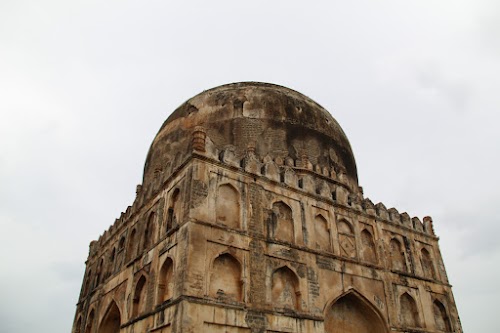
Ashtoor Tombs
Bidar, India
- Enjoy the peaceful atmosphere.
- Explore the intricate stucco work.
- Learn about the Bahmani dynasty.
- Photograph the architectural details.
Known for:
Description:
The Ashtoor Tombs, located in Bidar, Karnataka, are a complex of royal tombs of the Bahmani dynasty rulers. These imposing structures showcase a unique blend of Persian and Indian architectural styles. Each tomb is adorned with intricate stucco work, Quranic inscriptions, and impressive domes, reflecting the grandeur of the Bahmani Sultanate. The site offers a serene and historical experience, allowing visitors to step back in time and appreciate the artistic and cultural heritage of the region. The tombs are a testament to the rich history of the Deccan plateau and offer a glimpse into the lives of the rulers who once shaped this area. The peaceful ambiance makes it a perfect place for history enthusiasts and architecture lovers.
History:
The Ashtoor Tombs are the final resting place of the Bahmani dynasty rulers who governed the Deccan region from the 14th to the 16th centuries. The construction of these tombs began during the reign of Ahmad Shah I, who shifted the capital from Gulbarga to Bidar in 1425. Each subsequent ruler added to the complex, resulting in a diverse range of architectural styles and designs. The tombs reflect the power and wealth of the Bahmani Sultanate, which was a major cultural and political force in the region. After the fall of the Bahmani kingdom, the tombs were neglected for some time. They have since been restored and are now a protected historical site, offering valuable insights into the history of the Deccan.